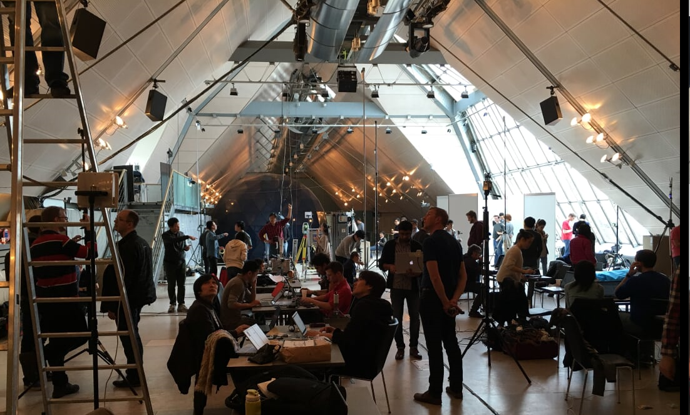Indoor location technology made simpler

Accurate indoor localization has the potential to transform the way people navigate indoors in a similar way that GPS transformed the way people navigate outdoors. Over the last 15 years, several indoor localization technologies have been proposed and experimented by both academia and industry. A major problem is that the proposed solutions are evaluated in different conditions, which makes hard any comparison of their performance.
The Microsoft Indoor Localization Competition aims to bring together real-time or near real-time indoor location technologies and compare their performance in the same space, solving the problem of absence of a common environment to compare indoor localization technologies. The competition, now at the third edition, took place in Vienna, Austria, on Sunday, April 10th, and Monday April 11th, 2016. The evaluation environment was very challenging, spanning two floors with metal, with a total evaluation area of approximately 500 m2.
All submissions were classified into two categories: 3D and 2D localization. All teams in the 3D localization category were required to deploy customized hardware, and provide 3D locations during the evaluation. All teams in the 2D localization category did not require customized hardware (just Commercial Off-The-Shelf devices) and reported 2D locations during evaluation. During the first day the teams were given 7 hours to setup and calibrate their systems and during the second day each team provided the coordinates of 15 test points with known ground truth. At the end, the evaluation metric was the average localization error across these 15 test points.
A team of researchers from the Pervasive Wireless System group led by Dr. Domenico Giustiniano from IMDEA Networks Institute competed with a solution in the 2D category. At the end of the competition, the team of researchers from IMDEA Networks achieved an average error of 3.17 meters, which resulted in ranking 5th out of ten teams in the final. (Out of the fifteen teams that were initially represented at the competition in the 2D category, only ten made it to the final ranking).
The proposal presented at the Microsoft Indoor Localization Competition by IMDEA Networks researchers runs on commodity Wi-Fi hardware, works using Wi-Fi Access Points (APs) and measuring the Time-of-Flight (ToF) of 802.11 data frames to mobile devices. The proposed solution was the only one that did not require any customized software in the mobile device, neither inputs from inertial sensors in the mobile device. The mobile device simply needed to be connected to the Commercial Off-The-Shelf Wi-Fi Access Points with customized firmware operating in the core of the 802.11 MAC state machine of a low-cost Wi-Fi chipset (cost of the chipset per unit of less than three dollars).
The IMDEA Networks solution is the simplest available today to swiftly build a positioning system in a new indoor environment with commodity hardware. It solves the following three typical problems presented by other indoor location technologies: (i) extensive and costly manual on-site calibration; (ii) installation of a dedicated application on mobile devices when this is not necessary; and (iii) faster depletion of the battery of the mobile device because of the inertial sensors and running software.
The IMDEA Networks solution estimates the position of 802.11 standard-compatible devices, such as smartphones, with distance from each AP to mobile targets estimated with ToF ranging measurements and based on an adaptive environmental training algorithm. Some details can be found in the third reference provided below.
More information: A. Marcaletti, M. Rea, D. Giustiniano, V. Lenders, and A. Fakhreddine, "Filtering noisy 802.11 time-of-flight ranging measurements," in CoNEXT '14. ACM, 2014, pp. 13–20. eprints.networks.imdea.org/id/eprint/905
Provided by IMDEA Networks Institute


















